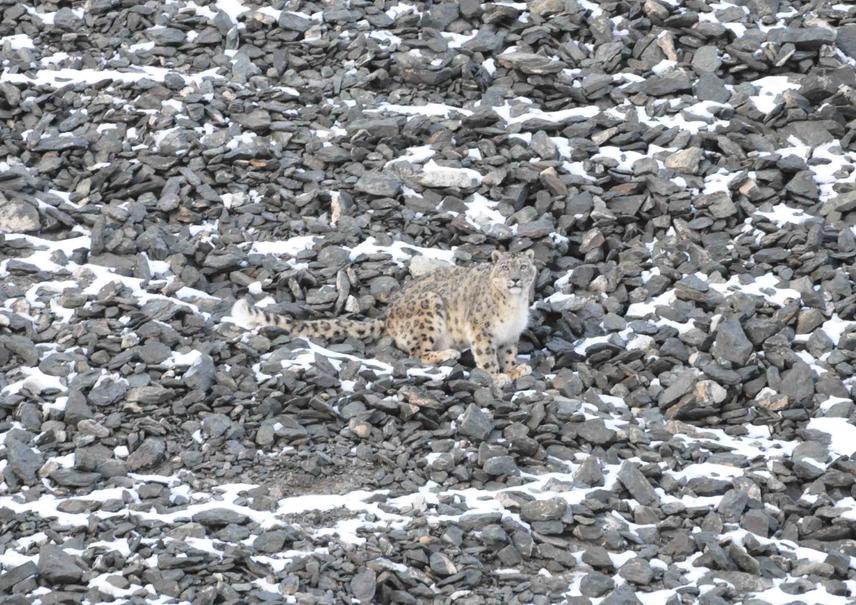Sunetro Ghosal
Other projects
Investigating the relationship between humans and large mammals in Changthang, eastern Ladakh, India

Snow leopard. © Sunetro Ghosal.
The Changthang plateau of eastern Ladakh is a high altitude plateau (on an average 4,000m above sea level, which is well above the tree-line and the threshold for agriculture at this latitude) in the cold desert Trans-Himalayan region of Ladakh in India. This mountain steppe hosts diverse ecosystems including wetlands and high altitude deserts. This forbidding landscape is home to a rich diversity of life forms and livelihoods. Nomadic pastoral groups (Changpa) have historically husbanded the sparse resources of the area with their herds of goat, sheep and yak. They have shared the area with several other actors including snow leopard, Asiatic wild dog, Tibetan antelope, Tibetan argali and Tibetan gazelle, wild yak and black-necked crane, which have been variously classified as endangered, near threatened and vulnerable by the World Conservation Union (IUCN). All these actors share a long and dynamic history of relations with each other and are collectively embedded within changes underway in Changthang, characterised by an intensification of climatic fluctuations and integration into discourses of development and modernisation.
These processes have impacted all the actors in Changthang and also heralded an increased presence of other human groups on the plateau. This includes security forces (who are stationed in well-stocked bases in different parts of the area), conservation managers, tourists (who visit the area primarily during the short summer months), travel agents (who have a commercial interest in facilitating access of tourist to these areas), researchers, NGOs and the district administration. These actors make specific claims on Changthang and form new relationships with its residents, with complex and diverse impacts on its ecology and embodied meaning.
This research uses an ethno-ethological approach to critically examine the complex negotiations between the different actors, their networks of relations and how they engage with the changes underway. Thus, it explores the dynamics and reflexivity of practices through which different actors relate, negotiate, compete and accommodate each other. Though independent, this research will be carried out in collaboration with a host of different government, non-governmental and research agencies working in the area. The insights from this study will help establish priorities for further research and also identify potential flashpoints in human-wildlife interactions in Changthang to assist current efforts to conserve and manage the sociocultural and biological heritage of the region.